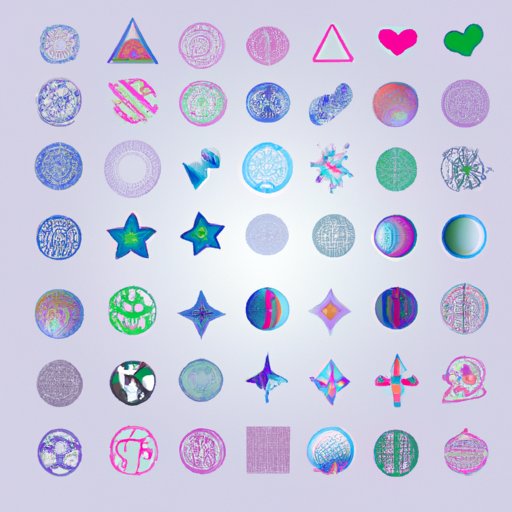Introduction
As technology advances, the demand for high-quality images in different formats also increases. Vector images are among the most popular image formats and have gained significant recognition for their flexibility, scalability, and versatility. In this article, we will explore what vector images are, why they are essential for both designers and non-designers, and how to use them.
Understanding Vector Images: A Guide for Non-Designers
Vector images are made up of numerous geometric shapes such as lines, polygons, and curves. These shapes are created using mathematical equations that allow them to scale up or down without losing their quality. Unlike raster images that are composed of tiny pixels, vector images are known for their smooth lines and clean edges.
Some examples of common vector image formats include SVG, AI, EPS, and PDF. Designers commonly use software such as Adobe Illustrator, CorelDRAW, or Inkscape to create and edit vector images.
Despite being popular among designers and graphic artists, vector images are equally crucial for non-designers. Unlike raster images, which tend to pixellate when resized, vector images do not lose their quality. Additionally, vector images are generally smaller in size, making them ideal for use on websites, especially when it comes to logos, icons, and other graphical elements that require scaling.
Why Every Designer Should Know the Benefits of Vector Images
Designers often encounter a wide variety of projects that require scalability. Whether it is for print, web design, or branding-related work, designers need images that can be scaled up or down without losing quality. Vector images are a great solution for such demands. With vector software, designers can quickly create vector images, which can then be resized, rotated, or edited with ease.
Vector images improve workflow and time-saving; designers do not have to spend a lot of time redrawing or re-creating images for different clients or projects. Instead, they can simply make use of the already-created vector images and customize them to suit the project’s demand.
Exploring the Advantages of Vector Images over Raster Images
A raster image is a type of file that is composed of small square or rectangular bits called pixels. Unlike vectors, resizing raster images often leads to quality reduction or “pixelation.” Raster images are ideal for photographs but not suitable for creating logos, icons, and other shapes requiring scalability.
Vector images offer several advantages over raster images. They are scalable without any loss of quality. This means a vector image created for a business card can be quickly scaled up and used for print ads or large outdoor displays without any quality loss.
Another advantage of vector images over raster images is their file size. Vector images need lesser disk space than raster images because they are not made up of pixels. This makes vector images perfect for use in websites, where smaller image files equate to shorter load times, ensuring that the website’s overall performance is not negatively affected.
Creating Your Own Vector Images: A Basic Tutorial for Beginners
Creating a vector image is an easy process that requires the right tools and techniques. Many software packages can be used to create vector images, including Adobe Illustrator, CorelDRAW, Sketch, and Inkscape.
The basic steps involved in creating a vector image include sketching, tracing, and filling. Sketching refers to creating a rough draft of the image on paper or digitally. Tracing involves drawing each individual shape and curve, while filling involves adding colors and gradients to the image.
Vector software comes with numerous tools and techniques to help create unique and personalized images. Some of these tools include the use of layers, precise measurement, and symmetry tools to enhance the design.
The Evolution of Vector Images in Computer Graphics
Vector graphics have been around for a long time, dating back to the early days of computer graphics. Early computer systems only allowed for creating basic shapes, lines, and geometric patterns, but technology has come a long way since then.
As computer technology evolved, so did vector graphics technology. Shape rendering and anti-aliasing improved, and new features were added, such as gradient fills, text options, and transparency settings. Today vector graphics play a significant role in almost all areas of design, including product design, branding and advertising, and user interface design.
How to Convert Raster Images to Vector Images Using Adobe Illustrator
Luckily, there are ways to convert raster images to vector images through software such as Adobe Illustrator. The Adobe Illustrator “Image Trace” tool can trace a raster image and create a vector image from it.
To convert an image from raster to vector format using Adobe Illustrator, follow the step-by-step instructions below:
1. Open Adobe Illustrator and create a new document.
2. Select “File” from the top menu bar and click on “Place” to open the raster image you want to convert.
3. Select the image and go to the “Image Trace” panel. Click on “High Fidelity Photo” in the “Presets” drop-down menu.
4. Adjust the “Threshold” and “Paths” settings until you are satisfied with the image quality.
5. Click on “Expand” to convert the image from a traced raster image to a fully editable vector image.
Conclusion
Vector images are essential for both designers and non-designers, providing scalability and flexibility that is not possible with raster images. Designers can save time and improve workflow by using vector images, while non-designers can benefit from their ability to scale without losing quality. The evolution of vector graphics has revolutionized the design industry, and they are now a fundamental part of it.
We urge you to take advantage of this powerful image format and start using vector images today. With the right tools and techniques, anyone can create beautiful and professional vector images for their projects.
